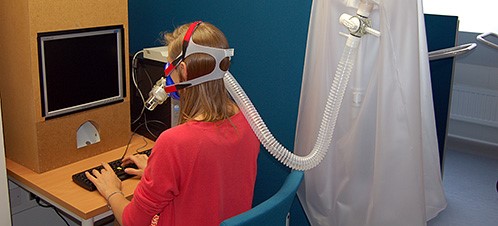by Olivia Maynard @OliviaMaynard17
This blog originally appeared on the Mental Elf site on 6th July 2015.
While bereavement can occur at any point during the lifespan, it is much more common later in life and is a risk factor for both poor physical and mental health.
While the Mental Elf has blogged previously about the impact of childhood bereavement on mental health, the impact of bereavement on the health of older people can be even more severe, given the ongoing declines in health as a result of their age.
Due to the high prevalence of bereavement in this age group, understanding how bereavement leads to declines in health among older adults is important. Behavioural changes may partially account for these negative health outcomes.
To examine this, Stahl and Schulz (2014) conducted the first systematic review to examine the relationship between bereavement and five routine health behaviours:
- Physical activity
- Nutrition
- Sleep
- Alcohol use
- Tobacco use
As well as one modifiable risk factor associated with health:
- Body weight

Methods
The authors searched databases to find 34 studies which met the following criteria:
- Quantitative and qualitative studies with either observational or intervention-based designs;
- Older adults (aged over 50 years) who had experienced the death of a spouse;
- Health behaviours were assessed.
Results
Physical activity
18 studies: 4 cross-sectional, 8 prospective longitudinal, 5 post-bereavement longitudinal
- Physical activity was assessed using self-report in all studies and physical activity ranged from social activities such as visiting friends to sports activities.
- As a result, the evidence was mixed, with bereavement increasing the prevalence of social activities, but decreasing the prevalence of sports. Furthermore, while this pattern applied to bereaved women, bereavement decreased all forms of physical activity among men.
Nutrition
12 studies: 5 cross-sectional, 5 prospective longitudinal, 3 post bereavement longitudinal
- Nutrition was assessed using a range of self-report questionnaires.
- There was consistent evidence for a strong relationship between bereavement and increased nutritional risk, including worse nutrient intake and poor dietary behaviours, particularly within the first year of bereavement.
Sleep quality
9 studies: 1 cross-sectional, 0 prospective longitudinal, 8 post-bereavement longitudinal
- Sleep quality was assessed using both self-report and objective measures such as electroencephalography and actigraphy (measurement of movement using small body sensors).
- While the self-report studies consistently showed strong support for a link between bereavement and poorer sleep quality, no relationship was observed when sleep disturbance was measured objectively.
Alcohol consumption
7 studies: 2 cross-sectional, 3 prospective longitudinal, 2 post-bereavement longitudinal
- There was moderate evidence (from longitudinal studies only) that bereavement was associated with increased self-reported alcohol consumption, for both men and women.
Tobacco use
7 studies: 2 cross-sectional, 4 prospective longitudinal, 1 post-bereavement longitudinal
- Smoking status and frequency of tobacco use was assessed using self-report.
- There was inconsistent evidence for the impact of bereavement on smoking behaviour, with bereavement reducing smoking frequency among current smokers (particularly men) but increasing the likelihood of smoking initiation among female non-smokers.
Weight status
6 studies: 1 cross-sectional, 5 prospective longitudinal, 0 post-bereavement longitudinal
- There was consistent evidence across the studies that bereavement led to unintentional weight loss among both men and women.

Limitations and directions for future research
- The studies were heterogeneous and many did not report effect sizes, meaning that quantitatively assessing them (i.e. using meta-analysis) was not possible.
- The majority of studies used self-report which may be affected by recall bias. For studies exploring sleep quality, only those which used self-report, rather than objective measures observed a negative effect of bereavement.
- Few of the longitudinal studies reported the length of the bereavement period or when assessments were taken. Precise information on measurement intervals is important in determining when behavioural changes are most likely to occur and would be important for treatment.

Discussion
This systematic review observed:
- Strong support for changes in nutrition, sleep quality and weight status after bereavement
- Moderate evidence for an impact on alcohol consumption
- Mixed evidence for effects on physical activity and tobacco use
Although this review did not explore why bereavement led to these changes in health behaviours, the authors provide a number of explanations, which should be examined in future studies:
- Loss of social support and the onset of depression and grief. This may reduce motivation to engage in health-promoting behaviours such as physical activity and also exacerbate or trigger physical symptoms such as poor sleep and headaches.
- Changes in daily routines. Previously shared activities, such as exercise, food preparation or sleeping, may be difficult to maintain following spousal loss.
Crucially, however, this review is only one part of the puzzle. While it shows us that bereavement is associated with changes in health behaviours, we don’t know whether these changes mediate the relationship between bereavement and physical and mental health, the key outcome we’re interested in.
Given the known health burden associated with bereavement, it is critical that we further investigate this link and if this link were observed, interventions could target health behaviours to reduce the impact of bereavement on physical and mental health.

Links
Primary paper
Stahl ST, Schulz R. (2014) Changes in routine health behaviors following late-life bereavement: A systematic review. Journal of Behavioral Medicine, 37, 736-755.
– See more at: http://www.nationalelfservice.net/mental-health/are-changes-in-routine-health-behaviours-the-missing-link-between-bereavement-and-poor-physical-and-mental-health/#sthash.QRsZgV2E.dpuf











